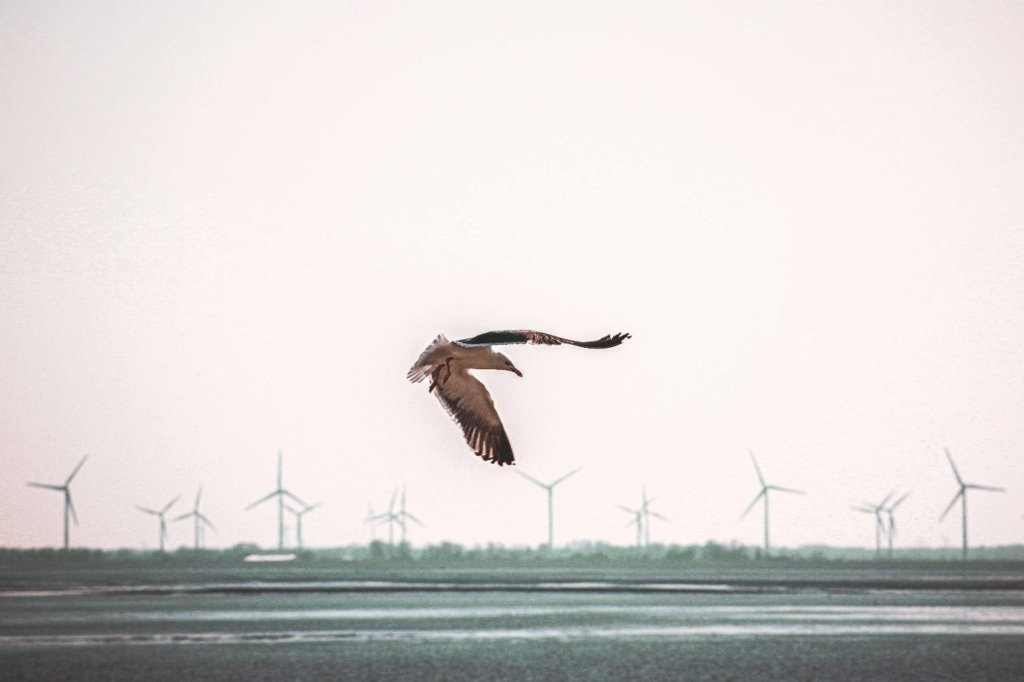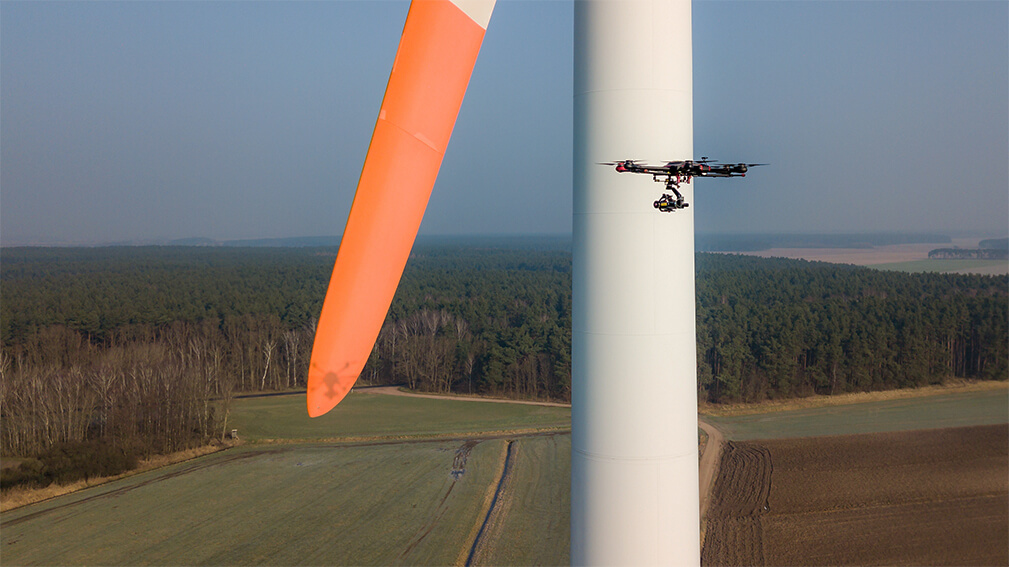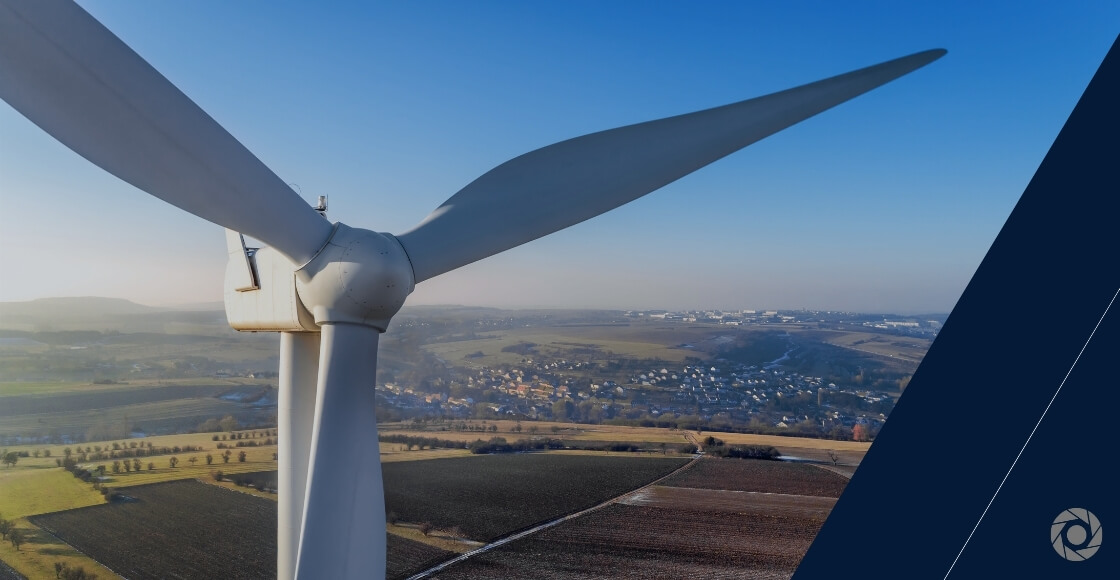As the United States transitions to renewable energy, wind turbines are playing an increasingly prominent role in the U.S. electrical grid.
As such, electricity providers need to make sure they’re using the latest technologies for wind turbine inspections. This enables them to maintain stability and efficiency.
Unfortunately, wind turbines are prone to a variety of threats that can lead to performance issues or failure. For example, a recent field study found that icing on wind turbines can reduce power production by as much as 80%!
This article explores how providers can conduct wind turbine inspections. We’ll also look at how drones are helping improve the process.
First Things First: What Do Wind Turbine Inspections Involve?
Wind turbines seem simple at first glance. But there are a number of critical components that need to be periodically inspected for safety and performance.
With that in mind, here’s a breakdown of what you need to inspect in a wind turbine.
Wind turbines seem simple at first glance. But there are a number of critical components that need to be periodically inspected.
Rotor Blades
To ensure a turbine is operating properly, you need to inspect blades for signs of rust, damage, or loose parts. Blades should fit snugly to the gearbox.
Gearbox
The rotor shaft moves at too low of a speed to produce power. Therefore, the manufacturers include a gearbox to create a high enough revolution to power the generator.
If the gearbox stops working efficiently, then power production could plummet.
Generator
It’s also necessary to inspect the generator. That’s the device at the top of the wind turbine for transforming wind power into electricity. Operators need to monitor generators for safety and efficiency.
Nacelle
Some of the most important components of a wind turbine, including the gearbox and generator, rest inside of a chassis called the nacelle. To ensure optimal performance, the nacelle should be free of cracks or damage and protected from the elements.
Power Cables
All wind turbines contain power cables, which run from the nacelle to the transformer at the base of the tower. It’s crucial to inspect cables to protect against power loss for safety purposes.
Transformer
The transformer also plays a key role in the electricity production process. It moves power from one circuit to another while maintaining the same frequency. Some transformers sit in the nacelle, while others sit at the base of the platform.
Modern transformers are capable of withstanding harsh environmental conditions and high humidity levels. However, like any other component, they can become damaged or degrade over time and need maintenance or replacing. Maintenance crews should prioritize transformer stability during routine inspections.
Tower
The main tower of the wind turbine is usually predominantly made of steel. Towers are usually very stable. However, they can move slightly from time to time, especially following large storms. What’s more, towers may also shift slightly in rural areas due to ground movement.

Wildlife
Each year, hundreds of thousands of birds die in wind turbines. Therefore, electricity providers should work with local wildlife and conservation experts to analyze their long-term impact on animal populations.
For example, birds may shift flight patterns over time, depending on food or weather conditions. And that may bring them into contact with towers.
In addition to protecting wildlife, this is also important for protecting towers and preventing costly damages.
Power Production
At the end of the day, the most important thing a turbine does is create electricity. Operators need to consider total power production for each turbine—both on a historical and real-time basis.
In fact, turbines that aren’t producing adequate levels of power may need further analysis to determine the cause and increase output.
The Evolution of Wind Turbine Inspections
Wind turbines have been around for hundreds of years. But it wasn’t until the late 19th century when people began using turbines to produce electricity.
Until the middle of the 20th century, maintenance teams performed manual inspections for wind turbines. Of course, this was a dangerous, time-consuming job.
By the late 20th century, wind turbine inspections were handled by supervisory control and data acquisition (SCADA) systems. Early SCADA deployments first enabled teams to manually pull data from turbines for analysis. Eventually, they gained local area networks (LANs) and then wide area networks (WANs).
People still use SCADA today for collecting and analyzing wind turbine data. And these systems have evolved considerably since they first appeared on the scene. Now, SCADA systems are fully connected. As such, they are capable of providing real-time data flows to maintenance and operations teams.
Overall, the wind turbine inspection process is rapidly changing as electricity providers are using a variety of additional technologies.
Overall, the wind turbine inspection process is rapidly changing as electricity providers are using a variety of additional technologies. These include Internet of Things (IoT) sensors, apps, and data processing engines to collect information, manage workflows, and conduct routine maintenance.
In recent years, uncrewed aerial vehicles—or drones—have emerged as one of the most exciting technologies that providers are now using during inspections. Let’s take a closer look at the transformative role drones are playing in wind turbine inspections.
Streamlining Inspections With Drones
In case you’re unfamiliar, here’s a quick primer.
- Basically, drones are small aircraft that often weigh less than 50 pounds.
- They typically have cameras for capturing images and video
- And they may also contain sensors for advanced inspections
Accordingly, here are some of the numerous ways drones can help with inspections.
Reduce Rollouts
Truck rollouts can be expensive, especially at scale. Instead of using trucks and maintenance crews for routine inspections, electricity providers can instead deploy a fleet of drones from a single location and fly them from tower to tower. This can save money and make it easier to inspect endpoints.
Improve Safety
By reducing or even eliminating manual inspections, electricity companies can reduce the number of field crews that they need to send out each year. This means fewer accidents and injuries.
In particular, this is important following storms when conditions may be icy or windy. In fact, drones can prevent companies from having to put workers into harm’s way—protecting teams while ensuring turbines are working.
Enhance Inspections
Drones can reach parts of a tower that would be difficult to reach manually. As such, they can take high-quality pictures and video, potentially alerting maintenance crews about damage or operational failure.

BVLOS: The Future of Drones
Drones have been around for decades. Part of the reason they haven’t yet made a big splash in the utility space is because they’ve been largely limited to visual line of sight (VLOS) deployments.
In other words, the Federal Aviation Administration (FAA) requires operators to keep drones in their direct line of sight at all times. This limits how far drones can travel. And it also limits what you can use them for.
Recent advances in beyond visual line of sight (BVLOS) technology make it possible to fly drones over greater distances.
For example, in a BVLOS deployment, drones can travel up to hundreds of miles from an operator. Operators can control them through video feeds supported with real-time decisioning engines for enhanced safety and control.
In the coming years, more drones will become BVLOS-enabled—meaning electricity providers need to get up to speed with this developing trend.
Iris Automation is an industry pioneer in BVLOS technology, offering powerful detect-and-avoid systems for drones. If you’re interested in learning more about how drones can help your organization optimize wind turbine inspections—and how Iris Automation can help—check this out.
This post was written by Justin Reynolds. Justin is a freelance writer who enjoys telling stories about how technology, science, and creativity can help workers be more productive. In his spare time, he likes seeing or playing live music, hiking, and traveling.

